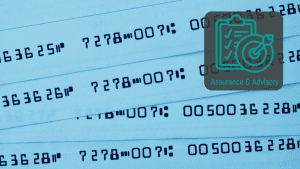LSL Webinar “Back to Basics | Put the Pieces Together: A Guide to Bank Reconciliations” presented by Louis Li and Riley Greenlee, CPA outlined the fundamentals of performing accurate and efficient bank reconciliations to streamline the process for local government finance departments.
In case you missed it – here, we’ll guide you through what you need to get started, a step-by-step process of how to calculate figures, and the common mistakes to avoid.
Whether you’re a beginner or just need a quick reminder, feel free to bookmark this post, save the link, or print out the steps for easy access later.
Bank reconciliations are a crucial process in maintaining the financial integrity of local government finance departments. A proper reconciliation ensures that the transactions recorded in your general ledger (GL) match those in your bank statements, providing accurate financial reporting and reducing the risk of errors or fraud. Here’s a step-by-step guide to putting together all the pieces necessary to reconcile your bank statements effectively.
Reports You Need for Reconciliation
To begin, gather the following common reports:
- Bank Statement/Credit Card Statements: The primary source for reconciling transactions.
- Check Listing: A record of all checks issued within the month.
- Previous Month’s Outstanding Checks Listing: Checks that have not yet cleared the bank from the previous month.
- Cash Receipt Listing: A log of all cash received and recorded.
- Previous Month’s Deposit in Transit Listing: Deposits that were recorded in the GL but had not yet cleared the bank by the end of the previous month.
- GL Cash Balance at the End of the Month: The cash balance recorded in your general ledger at the close of the month.
Step-by-step Process
The goal of reconciliation is to compare the adjusted bank balance with the adjusted general ledger balance. Here’s how to calculate the necessary figures:
- Adjusted Bank Balance:
- Ending Bank Balance (from the bank statement)
- Minus: Outstanding Checks (checks issued but not cleared)
- Plus: Deposit in Transit (deposits recorded in the GL but not yet cleared by the bank)
- Deposit in Transit Calculation:
- Start with the previous month’s deposit in transit.
- Add: All deposits recorded in the GL during the month.
- Minus: Deposits that have cleared the bank.
- Outstanding Checks Calculation:
- Start with the previous month’s outstanding checks.
- Add: All checks issued during the month.
- Minus: Checks that have cleared the bank.
- Adjusted General Ledger Balance:
- Begin with the GL cash balance at the end of the month.
- Adjust for any prior month’s journal entries or reconciling items.
How to Find and Resolve Variances
After calculating the adjusted balances, compare the adjusted bank balance to the adjusted general ledger balance. If there is a variance, investigate the following common reconciling items:
- Bank Fees: Often recorded only in the bank statement.
- Interest Income: Might not have been recorded in the GL.
- Unrecorded Transactions: Transactions that occurred but weren’t recorded in the GL.
- Incorrectly Posted Transactions: For example, checks issued from the wrong cash account.
Common Mistakes to Avoid
Watch out for these typical mistakes during your reconciliation process:
- Returned or Voided Checks: Ensure that returned or voided checks are promptly removed from the list of outstanding checks in the general ledger. Also, confirm that any reissued checks are correctly recorded to prevent duplication.
- Discrepancies in Posting Amounts: Double-check that the amounts recorded in your financial system match those that cleared through the bank. Any discrepancies should be investigated immediately, as they could indicate data entry errors or potential fraudulent activity.
- Timing Issues from Credit Card payments: Credit card payments often have timing differences due to delays in processing by the bank. Keep a detailed log of credit card transactions and the dates they were recorded in the general ledger versus when they cleared the bank. This will help you identify and account for timing differences more effectively.
- Unrecorded Transactions: Develop a routine for reviewing all potential cash transactions, such as bank fees, interest income, and other automatic withdrawals or deposits. Implement a checklist to ensure these transactions are not overlooked and are recorded promptly.
- Delayed Cash Receipts Posting: Establish a clear policy for the timely posting of cash receipts across all departments. Regularly communicate the importance of this policy and monitor compliance to ensure that cash receipts are recorded as soon as they are received.
Conclusion
Regular and accurate bank reconciliations are essential for maintaining the financial health of any local government finance department. By following these steps and being aware of common mistakes, you can streamline the reconciliation process, ensuring that your financial records are accurate and up to date. Keeping up with this process monthly will not only reduce your workload at year-end but also ensure that you’re well-prepared for your auditor, as you will be familiar with any discrepancies and ready to address them promptly.
If you need more guidance to feel prepared for your auditor – check out the blog ‘Put the Pieces Together for Your Auditor: A Guide to Bank Reconciliations’.




